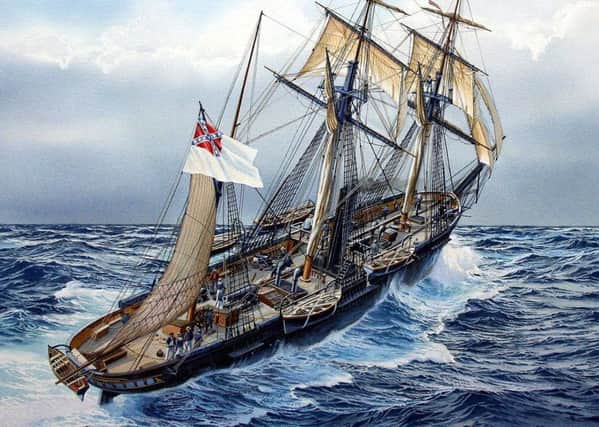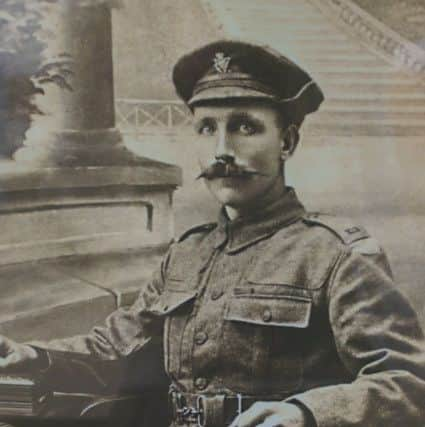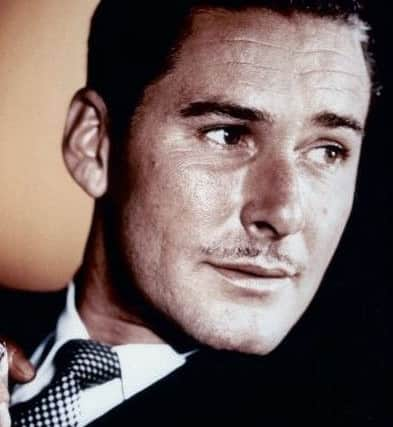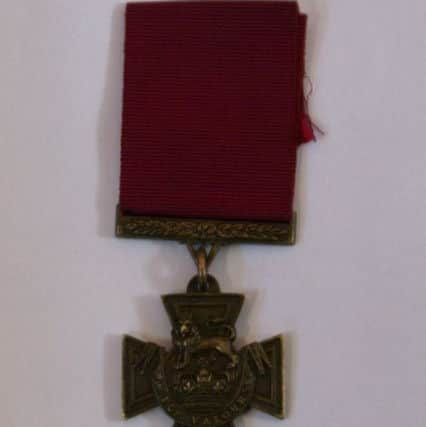Potential links between a local First World War hero and an American Civil War ship


There had been some previous discussions about this on Roamer’s page because Flynn’s father, marine biologist and embryologist Theodore Flynn MBE, was Professor of biology at Queen’s University from 1931 to 1948.
It therefore seemed quite possible that Errol might have popped over to see his dad, particularly when the Hollywood heart-throb was acting in England.
Advertisement
Hide AdAdvertisement
Hide AdAnd famously, when the Professor discovered a new species of sub-tropical kelpfish during one of his far-flung scientific expeditions he named it ‘erroli’ in Latin, after his son!


Many stories have circulated about Errol’s visits to Belfast, the most repeated (and uncorroborated!) tales are about the excitement he caused at local dances, packed with adoring girls who’d heard that Flynn was to grace their Saturday-night bop!
But Ian Rippey provided actual accounts of ‘positive sightings’ in Belfast, which he’d heard from the late Miss Rene Liggett of Armagh who told him that she definitely remembered the iconic young actor visiting his dad in Queen’s University.
Ian has been in communication with Roamer again, with yet more intrigue – and the words of a song!
Advertisement
Hide AdAdvertisement
Hide Ad“I noticed the piece about the Confederate States Ship Alabama in the News Letter of Friday, September 21st,” his recent letter began, and continued,“I was interested in the Bushmills connection, in that a local boatman took the Confederate agent James Bulloch and the Liverpool pilot George Bond from the Giant’s Causeway to the Mill House Coaching Inn, now the Bushmills Inn.”


That was on the night of July 31st 1862.
Ian, whose late mother Susan Rippey was born in Bushmills in 1926 wondered “if the boatman might have known the family of Robert Quigg”.
Rifleman Robert Quigg VC (1855-1950) has often been mentioned on this page, and Ian outlined the heroic details of his unimaginably brave rescue of seven wounded men on July 2nd 1916 at the Battle of the Somme “in an unfortunately unsuccessful attempt to find his commanding officer, Lieutenant Sir Harry Macnaghten”.
Prior to going to war “Robert had worked at Dundarave House near Bushmills”, Ian’s letter continued, “which was owned by the Macnaghten family until a few years ago. Macnaghten’s body was never found”.


Advertisement
Hide AdAdvertisement
Hide AdRobert Quigg was born at Ardihannon “just west of the Giant’s Causeway” and according to Ian, “he later moved to the to the townland of Turfahun. After his discharge from the army after the war, in which he apparently escaped injury, he was later injured in an accident in Belfast”.
Ian added: “Apparently Robert Quigg VC sometimes took tourists around the Giants Causeway by boat.”
If the VC-holder was a part-time boatman at the Causeway after the First World War, that was a long time after July 1862 when CSS Alabama called in with James Bulloch and George Bond on board, prior to the vessel sailing around the world under the command of Captain Raphael Semmes to capture 65 Union ships for the Confederate cause during the US Civil War.
However, according to most accounts Rifleman Quigg’s father, Robert Quigg senior, did work as a boatman and tour guide at the Giant’s Causeway.
Advertisement
Hide AdAdvertisement
Hide AdSo the local boatman who ferried Bulloch and Bond from the CSS Alabama to their appointment in Bushmills may well have known the Quigg family, just as Ian Rippey wondered.
He could even have been Robert Quigg senior himself!
The CSS Alabama was sunk by the USS Kearsarge on June 19th, 1864.
Ian’s letter included an admission – “as a purely amateur songwriter, I have written a song about Robert Quigg” and he added, “there is also an excellent song, apparently written around 1925, about the sinking of the CSS Alabama called Roll, Alabama Roll”.
Ian is interested in the music of the American Civil War era and hopes to persuade a group of musicians he’s “informally associated with” in Gilford, Co Down, to put on an American Civil War concert provisionally called ‘Hits of the (18) Sixties’!
Advertisement
Hide AdAdvertisement
Hide AdIan’s letter ended with the original words of Roll, Alabama Roll, though he’s keen to point out that they include “the wrong year of the sinking” – 1865 instead of 1864 – “and they incorrectly name the shipbuilder as ‘Jonathan’ Laird, whereas it should be John Laird, as in ‘John Laird Son and Company, the same Laird as in Cammel-Laird Shipbuilders’”.
When the Alabama’s keel was laid
Roll, Alabama, Roll
T’was laid in the yard of Jonathan Laird
O Roll, Alabama, Roll
T’was laid in the yard of Jonathan Laird
Roll, Alabama, Roll
T’was laid in the town of Birkenhead
O Roll, Alabama, Roll
Down the Mersey way she rolled then
Roll, Alabama, Roll
Liverpool fitted her with guns and men
O Roll, Alabama, Roll
From the Western Isle she sailed forth
Roll, Alabama, Roll
To destroy the commerce of the North
O Roll, Alabama, Roll
To Cherbourg port she sailed one day
Roll, Alabama, Roll
To take her count of prize money
O Roll, Alabama, Roll
Many a sailor lad he met his doom
Roll, Alabama, Roll
When the Kearsarge it hove in view
O Roll, Alabama, Roll
Till a ball from the forward pivot that day
Roll, Alabama, Roll
Shot the Alabama’s stern away
O Roll, Alabama, Roll
Off the three-mile limit in sixty-five
Roll, Alabama, Roll
The Alabama went to her grave
O Roll, Alabama, Roll